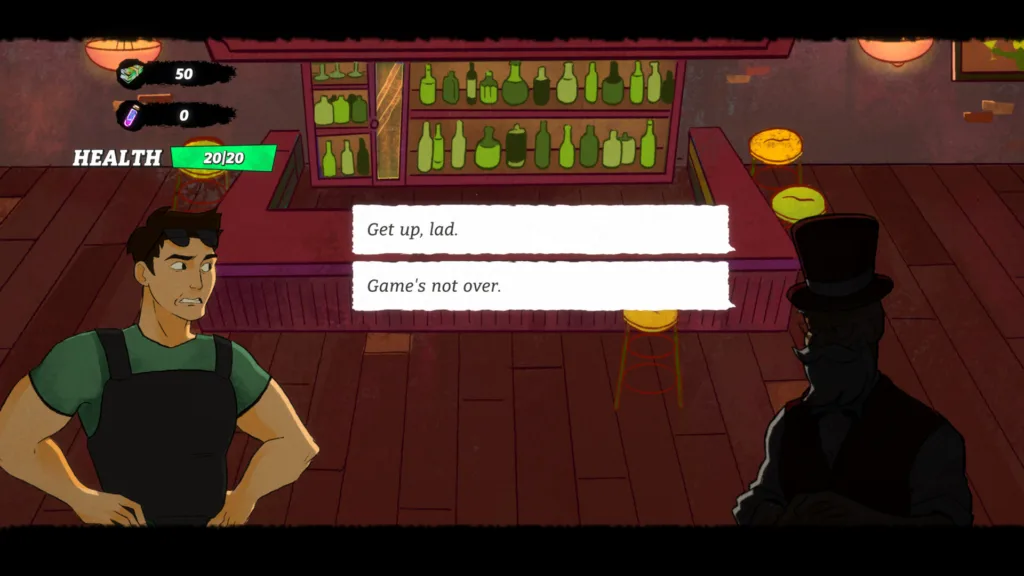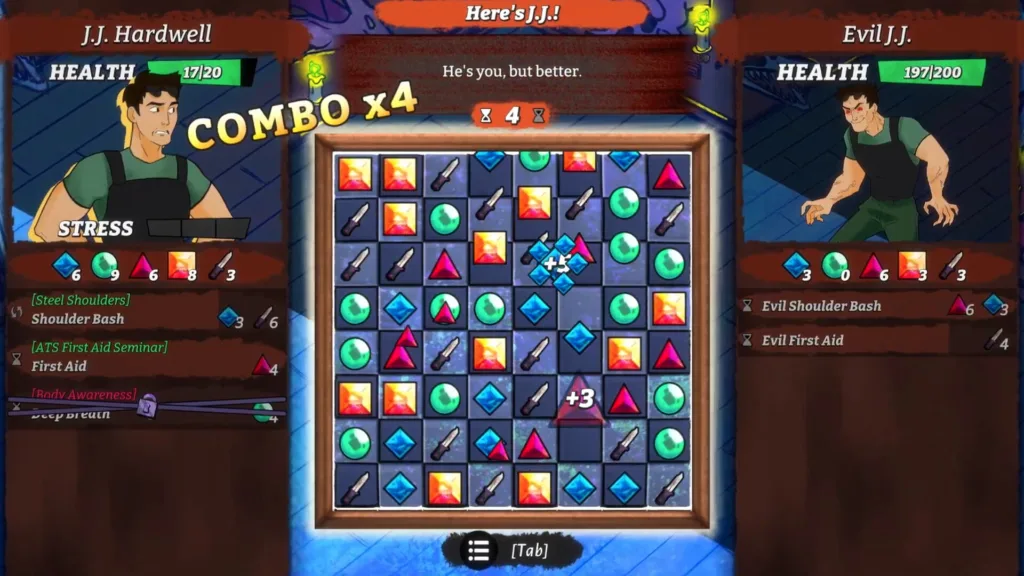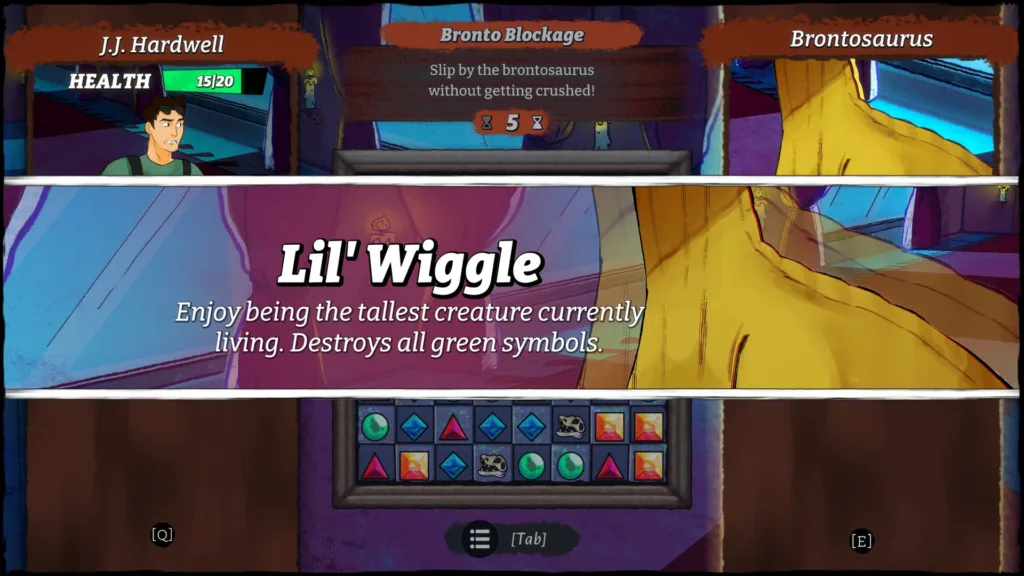Enter Creepy Redneck Dinosaur Mansion 3, a title that practically wears its audacious spirit on its sleeve. At first glance, it presents itself as a romp through a survival horror landscape, albeit one populated by an unusual reptilian menace.
You are J.J. Hardwell, an agent dispatched on what seems like a perilous, if somewhat bizarre, assignment: to probe the depths of a sprawling estate where dinosaurs roam and an atmosphere of scientific curiosity gone awry permeates the air. The initial encounters hint at danger, laced with a distinct, almost slapstick, sense of humor, suggesting a straightforward, albeit quirky, adventure into the unknown.
However, the creaking floors and shadowy corners of this mansion guard secrets that extend far beyond simple creature features. The initial setup, with its clear objectives and familiar genre cues, acts as a carefully constructed doorway. Step through it, and you begin to sense that the architecture of this experience is far more complex and self-aware than it first appears, inviting a deeper look into its very foundations. This is not merely a place to explore, but a concept waiting to unfold.
Deconstructing the Dinosaur: A Mechanical Medley
At the heart of Creepy Redneck Dinosaur Mansion 3 lies a surprisingly intricate match-3 puzzle system, serving as the primary engine for nearly every interaction. Forget mindless tile-swapping; here, matching symbols is a deliberate act of executing skills, launching attacks, or even navigating environmental hazards. Each encounter, be it against a prehistoric beast or a malfunctioning computer, unfolds on a shared game board where J.J. and his adversaries take turns.
This creates a compelling tactical layer, demanding players to weigh the benefits of gathering resources for a powerful ability against the risk of setting up an advantageous cascade for their opponent. The objectives themselves are varied: one board might require a direct assault by matching knife icons, another the collection of specific symbols to fill a progress meter, and some even introduce self-damaging elements for comedic effect, ensuring the core loop maintains a fresh feel.
This puzzle-solving core is elegantly woven into a structure that encourages exploration and re-investigation, drawing light inspiration from Metroidvania design. The mansion’s layout is not a straight path; progress often involves acquiring new “Traits” or items that recontextualize previously explored areas.
A character might gain the “Feral” trait, for instance, suddenly allowing them to bypass a combat encounter by simply devouring the foe, or a newly acquired piece of information might unlock a dialogue option that reveals an entirely new narrative sequence. This approach gives a sense of organic discovery, where the world unfolds in response to the player’s evolving capabilities and understanding.
Further enriching this mechanical tapestry are distinct RPG elements. Player choices during dialogue sequences or specific actions undertaken in the world can bestow “Titles” upon J.J., such as “Coward” or “Awakened.” These are not mere flavor text; they function as tangible character aspects that unlock specific narrative responses or even unique options within the match-3 challenges. This system makes decisions feel substantial, directly influencing J.J.’s toolkit.
Alongside these narrative-driven enhancements, players can spend earned currency on practical upgrades like increased health or inventory space, and purchase consumable items that can turn the tide in difficult puzzles or satisfy conditions for accessing hidden routes, adding a welcome layer of strategic preparation. The interplay of these systems creates an experience where every choice, every match, and every discovery feels interlinked.
Scripting Self-Awareness: Narrative Unbound
The true architecture of Creepy Redneck Dinosaur Mansion 3 reveals itself not through its physical mansion, but through its audacious narrative structure. Protagonist J.J. Hardwell soon stumbles upon a disquieting truth: he is a character ensnared within the digital confines of a video game.
More specifically, he’s the lead in the purportedly “third” installment of a beloved (and entirely fictional) series, a sequel that was unceremoniously cancelled and left incomplete, with J.J. himself a replacement for a hero from the franchise’s past. This realization recasts his entire purpose. His mission morphs into a literal quest to identify and rectify “bugs” that plague this unfinished game world, turning a common development term into a core gameplay objective.
This premise allows the game to become deeply self-referential, peeling back layers of its own construction for the player to inspect. The act of playing transforms into an exploration of what could have been, as “glitches” in the game world offer windows into previous iterations of characters, abandoned design concepts, and alternative enemy encounters.
It’s a fascinating dive into a simulated development history, where the player effectively becomes an archaeologist of code and concept. The experience blurs lines, particularly if the player encounters actual technical hiccups, making one feel part of this extended, meta-level bug hunt, a technique seen in other indie titles that deconstruct video game forms, but here it’s filtered through a unique comedic lens.
Beyond the inventive narrative mechanics, Creepy Redneck Dinosaur Mansion 3 offers a surprisingly poignant commentary on the very act of game creation. Through its satirical scenarios and the often-absurd predicaments J.J. faces, the game voices sharp observations about the video game industry: the precarious nature of development careers, the way passionate projects can vanish, and the unseen labor that goes into crafting interactive experiences.
It’s a narrative that manages to be both a humorous tribute to the art of game development and a pointed critique of its more challenging realities. This thematic depth feels authentic, possibly echoing the developing studio’s own journey, adding a layer of earnestness beneath the surface of dinosaur-related chaos.
Weaving Through What-Ifs: The Branching Path
Creepy Redneck Dinosaur Mansion 3 structures its narrative progression primarily through visual novel-style dialogue interactions, where player decisions directly carve out distinct branches in the unfolding story. These choices are rarely superficial; they are the catalysts for significant divergences, leading J.J. down wildly different sequences of events.
The game often provides a visual representation of these narrative pathways, perhaps a chart or map, allowing players to track their explored routes and identify the tantalizing blank spaces of unvisited possibilities. This system inherently encourages a completist approach, urging players to meticulously uncover every outcome to grasp the full scope of the game’s peculiar tale and its many “might-have-beens.”
Facilitating this deep dive into alternate realities is a forgiving “time travel” mechanic. Players can typically return to crucial checkpoints or decision points, allowing them to replay encounters and experiment with different choices without the need for entirely new playthroughs. This empowers a form of narrative experimentation, making it feasible to witness all facets of a situation and understand the direct repercussions of J.J.’s actions. It’s a system that respects player curiosity and facilitates the systematic untangling of the game’s multifaceted story.
Re-exploration is not merely for curiosity’s sake; it’s often a necessity driven by the game’s interconnected systems. A “Trait” earned on one narrative branch, an item discovered in another, or a critical piece of information gleaned from a specific outcome can become the key to unlocking new options or entirely different resolutions in a previously visited segment. The game cleverly mitigates the potential tedium of backtracking by ensuring J.J. grows stronger through upgrades and has access to items that can expedite repeat journeys through familiar territory. The ready availability of in-game currency also encourages the liberal use of these helpful items.
While the pursuit of every narrative thread and hidden trait can sometimes feel like a meticulous hunt, particularly when the game offers limited guidance towards the final few undiscovered nodes, the design generally supports this exhaustive exploration. Abilities like the “Feral” trait, allowing one to bypass certain conflicts, or powerful purchased tools ensure that revisiting areas is often a swifter, more empowered experience than the initial foray.
Charm, Chuckles, and a Sketchy Canvas
The comedic sensibility of Creepy Redneck Dinosaur Mansion 3 is one of its most defining characteristics, operating on a delightful frequency of the absurd and the keenly self-aware. Expect scenarios like J.J. Hardwell wryly commenting on the very survival horror tropes he embodies, facing off against an evil twin, or attempting to retrieve a book from an octopus in a library.
Even combat encounters, such as being distracted by adorable dog pictures during a critical task, are infused with this madcap energy. Crucially, this humor lands with surprising consistency, feeling genuinely amusing rather than forced, contributing significantly to the game’s distinct personality.
This comedic success is largely attributable to skillful writing that deftly navigates both laugh-out-loud moments and the more reflective, poignant beats of its meta-narrative. J.J.’s awareness of his video game existence provides a rich vein for witty observations. The dialogue carries considerable weight, effectively conveying character and tone, a notable achievement given the relative scarcity of voice acting.
The game’s art style is often described as “sketchy” and illustrative, a deliberate aesthetic choice. However, this presentation is not without its criticisms; some find the overall color palette somewhat muted, and at times, the symbols within the match-3 puzzles can lack the necessary visual distinction for quick reads. Yet, there are moments when the visuals decidedly enhance the meta-humor, with unexpected stylistic shifts or bizarre imagery punctuating the game’s self-referential nature.
The Dinosaur in the Details: A Balanced Look
When Creepy Redneck Dinosaur Mansion 3 fires on all cylinders, its appeal is undeniable. The match-3 combat system offers a consistent stream of engaging tactical puzzles, proving to be far more than a simple novelty.
This core gameplay is bolstered by consistently charming writing, an endearing protagonist in J.J. Hardwell, and a cleverly constructed narrative that makes the pursuit of its many alternate paths and “Titles” a genuinely rewarding endeavor. There’s a distinct satisfaction in piecing together the game’s fragmented story and witnessing how different choices ripple through its world, representing a noteworthy innovation within its puzzle-centric genre.
However, the experience is not without its occasional rough edges. Certain combat encounters, like the infamous “clown pterodactyl hybrid,” can feel disproportionately reliant on favorable random outcomes, leading to moments of distinct player annoyance. The ambition to encourage full exploration of its branching narrative sometimes stumbles when players are left to meticulously hunt for the final, elusive story nodes without clear guidance.
On a technical level, minor issues like dialogue lag have been noted, alongside infrequent but more disruptive game crashes – though the frequent autosave system thankfully mitigates the sting of lost progress. Some aspects of the visual presentation, particularly color contrast in puzzle elements, could also benefit from further refinement to ensure clarity.
The Review
Creepy Redneck Dinosaur Mansion 3
A refreshingly inventive and sharply written adventure, Creepy Redneck Dinosaur Mansion 3 masterfully blends strategic match-3 puzzles with a witty, captivating meta-narrative. Despite occasional unbalanced encounters and minor technical snags, its unique charm, earnest humor, and the rewarding exploration of its branching story make it a compelling experience.
PROS
- Inventive and strategic match-3 gameplay offers genuine depth.
- Exceptionally clever writing, filled with humor and charm.
- Engaging meta-narrative with insightful commentary on game development.
- Rewarding exploration through meaningful branching choices and outcomes.
- Distinct and memorable personality that stands out.
CONS
- Some combat encounters can feel unbalanced or overly reliant on luck.
- Tracking all narrative branches for 100% completion can become tedious.
- Occasional minor technical issues like lag or game quits (though autosaves help).
- Visuals, while stylistically fitting, sometimes lack clarity or have a muddy palette.




















































